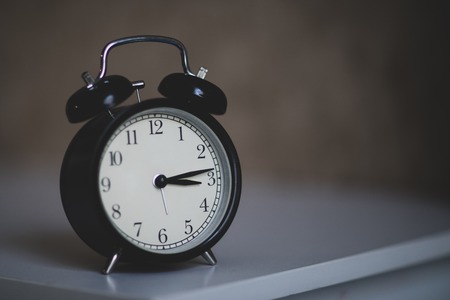The Science Behind Your Biological Clock
Our bodies run on a 24-hour schedule known as the circadian rhythm, which acts like an internal clock, telling us when to wake up, eat, and wind down. This rhythm is influenced by natural cues like sunlight and temperature, and it plays a huge role in regulating our sleep patterns, energy levels, and even how our metabolism works. For Americans juggling busy lives, understanding this “clock” can be a game-changer for better health and productivity. Think of that classic American morning—waking up with the sunrise, brewing a cup of coffee, and heading out for a jog or walk. These habits aren’t just cultural; they’re actually rooted in science. When you sync your daily routines with your circadian rhythm—like getting sunlight early in the day or timing meals consistently—you support your body’s natural processes. Research shows that following your biological clock can improve everything from mental focus to weight management and immune function. So if you’ve ever wondered why you feel groggy after staying up late or skipping breakfast, blame it on your biological clock being thrown off track. The good news? Simple changes to your morning routine can help reset your system and set you up for all-day wellness.
2. Rise and Shine: The Power of Natural Light Exposure
If you want to set your biological clock for optimal health, catching those first rays of sunlight in the morning is a game changer. Natural light is the most powerful cue for your circadian rhythm, which governs everything from energy levels to hormone production. Americans with busy schedules often overlook this simple yet effective wellness practice, but making time for morning light can help regulate sleep patterns, boost mood, and improve overall well-being.
Why Morning Sunlight Matters
Your body’s internal clock, or circadian rhythm, is highly sensitive to light exposure—especially within the first hour after waking. Morning sunlight tells your brain to suppress melatonin (the sleep hormone) and increase cortisol (the alertness hormone), helping you feel awake and ready for the day. This natural signal also helps synchronize other biological processes, like digestion and metabolism.
Practical Ways to Get More Morning Sunlight
| Strategy | How It Fits Busy American Lifestyles |
|---|---|
| Step Outside With Your Coffee | Enjoy your morning brew on the porch or balcony—even 10 minutes makes a difference. |
| Walk or Bike to Work/School | If possible, swap part of your commute for a walk or bike ride to soak up natural light. |
| Open Curtains Wide | Let as much daylight into your home as possible while getting ready. |
| Schedule Outdoor Tasks Early | Walk the dog, water the garden, or check the mail first thing in the morning. |
| Weekend Nature Breaks | Take advantage of weekends for longer outdoor activities like hiking or jogging. |
Bonus Tips for Cloudy Days and Shift Workers
If you live in a northern state or work irregular hours, consider using a light therapy box that mimics natural sunlight. Position it near where you eat breakfast or read emails to get those circadian benefits even when sunshine is scarce.
Prioritizing natural light exposure each morning doesn’t require major life changes. By weaving these small adjustments into your daily routine, you’ll give your biological clock a powerful reset—setting yourself up for better focus, energy, and health throughout the day.
![]()
3. Fueling Right: Breakfast Choices to Jumpstart Your Morning
Starting your day with a balanced breakfast is one of the most effective ways to align your energy levels with your biological clock. In American wellness culture, the focus is increasingly on meals that stabilize blood sugar and promote sustained alertness—two key factors for maintaining a healthy circadian rhythm.
Why Breakfast Matters for Your Biological Clock
Your first meal sets the tone for your metabolism and cognitive function throughout the day. Skipping breakfast or grabbing something high in sugar can lead to an energy crash mid-morning, making it harder to stay focused and productive. Prioritizing nutrient-dense choices provides steady fuel for both body and brain, syncing well with your natural wakefulness cycle.
Culturally Relevant American Breakfast Options
Classic American breakfasts can be easily adapted to fit these nutritional goals. Here are some practical ideas:
Oatmeal with Fruit and Nuts
A bowl of steel-cut oats topped with blueberries and walnuts delivers fiber, antioxidants, healthy fats, and slow-digesting carbs—perfect for stable blood sugar.
Greek Yogurt Parfait
Layer Greek yogurt with granola and fresh strawberries or bananas. This combination offers protein, probiotics, and just enough sweetness to satisfy without spiking glucose levels.
Eggs & Whole Grain Toast
Scrambled eggs or an omelet paired with whole grain toast provide high-quality protein and complex carbohydrates for lasting energy. Add spinach or tomatoes for extra nutrients.
Smart Swaps for Busy Mornings
If you’re short on time, opt for overnight oats prepared the night before, or try a smoothie made with spinach, almond butter, banana, and a scoop of protein powder. These options are quick but still deliver the balanced nutrition needed to kickstart your morning in line with your circadian health.
The Bottom Line
Nourishing yourself with thoughtful breakfast choices—rooted in familiar American foods but mindful of nutrition science—can make a tangible difference in how you feel throughout the day. By focusing on balanced macronutrients and real ingredients, you’re not only supporting your biological clock but also embracing sustainable wellness habits that fit the American lifestyle.
4. Mindful Movement: Morning Exercise the American Way
Incorporating movement into your morning routine is a powerful way to sync with your biological clock and boost both physical and mental well-being. Evidence shows that moderate exercise in the early hours can enhance alertness, improve mood, and regulate your circadian rhythm by supporting healthy cortisol levels. In the U.S., popular morning activities range from brisk walks in neighborhood parks to quick home workouts that fit busy lifestyles. Here’s how you can make mindful movement part of your daily start:
Benefits of Morning Movement
- Boosts Energy: Physical activity increases blood flow and endorphin release, helping you feel more awake and positive.
- Supports Metabolism: Exercise jumpstarts metabolic processes, making it easier to maintain a healthy weight.
- Enhances Focus: Moving your body improves cognitive function, setting a productive tone for the rest of the day.
Popular American Morning Activities
| Activity | Description | Time Commitment | Cultural Relevance |
|---|---|---|---|
| Walking or Jogging | A brisk walk or light jog outdoors or on a treadmill | 15-30 minutes | Parks, suburban neighborhoods, and city sidewalks are often filled with early risers getting their steps in before work. |
| Yoga or Stretching | Guided routines focusing on flexibility and mindfulness; often using apps or online videos | 10-20 minutes | Many Americans use yoga as a gentle wake-up ritual, integrating breathing exercises for stress reduction. |
| Quick Home Workouts | Bodyweight exercises such as squats, push-ups, or HIIT circuits | 10-15 minutes | Perfect for busy mornings; popularized by fitness influencers and widely adopted due to convenience. |
Evidence-Based Recommendations for Morning Movement
- Sustainability: Choose an activity you enjoy so it becomes a consistent habit. Research shows regularity is key for lasting benefits.
- Pace Yourself: Start slow if you’re new to morning exercise—consistency matters more than intensity at first.
- Create Cues: Set out workout clothes the night before or schedule walks with a friend for extra motivation and accountability.
- Mood Matters: Incorporate music or podcasts, which many Americans find helps boost motivation and enjoyment during morning movement.
Your Personalized Morning Movement Plan
If you’re looking to align your biological clock with energizing American wellness habits, experiment with different types of morning movement. Whether it’s a sunrise stroll, sun salutations, or a fast-paced circuit in your living room, the key is to get moving in a way that feels good for your body and lifestyle. Making mindful movement part of your morning routine sets a positive tone for the entire day and supports optimal health according to both science and American wellness traditions.
5. Mindset Matters: Mental Wellness and Mindfulness Techniques
Starting your day with a positive mindset is just as crucial for your biological clock as getting enough sunlight or eating a balanced breakfast. In American wellness culture, simple, accessible mental wellness practices have become morning essentials for setting the tone for the day ahead. Integrating techniques like gratitude journaling, meditation, or positive affirmations can help regulate stress hormones, support circadian rhythms, and foster emotional resilience.
Gratitude Journaling
Taking a few minutes each morning to jot down things you’re grateful for—whether it’s your morning coffee, a supportive friend, or simply waking up healthy—can shift your mindset from stress to appreciation. This practice is easy to fit into any American routine: keep a small notebook on your nightstand or use a notes app on your phone before you get out of bed.
Morning Meditation
Meditation doesn’t require elaborate setups or long periods of silence. Even five mindful breaths while sitting at the edge of your bed can calm the mind and anchor you in the present moment. Many Americans use guided meditation apps or short YouTube videos to make this practice fit seamlessly into their busy mornings.
Positive Affirmations
Repeating uplifting statements such as “I am energized,” “Today will be productive,” or “I am capable” helps rewire negative thinking patterns and boosts confidence. Try stating these affirmations aloud in front of the mirror while you brush your teeth or prepare breakfast—turning routine moments into opportunities for self-empowerment.
Making Mindfulness Part of Your American Morning
The beauty of these mental wellness strategies is their flexibility. Whether you’re commuting, working from home, or wrangling kids before school, there’s always a pocket of time to center your thoughts. By prioritizing mindfulness alongside other healthy habits, you’re not just supporting your mood—you’re giving your biological clock another tool to keep you balanced and thriving throughout the day.
6. Digital Discipline: Managing Screen Time After Waking Up
In today’s always-connected American lifestyle, screens are often the first thing we reach for in the morning—checking emails, scrolling through news, or catching up on social media. While technology keeps us plugged into work and school, it can disrupt our biological clock if not managed carefully. Practicing digital discipline in your morning routine can help align your circadian rhythms and set a healthy tone for the rest of your day.
Understanding the Impact of Morning Screen Time
Exposure to blue light from phones, tablets, and computers immediately after waking up can interfere with melatonin production, making it harder for your body to fully transition from sleep to wakefulness. This is especially relevant for Americans whose work and academic obligations often require early and immediate engagement with digital devices. The overstimulation can lead to increased stress and decreased focus throughout the morning.
Guidelines for Circadian-Friendly Tech Habits
- Delay Your First Glance: Aim to wait at least 20–30 minutes before checking your phone or computer in the morning. Use this time for hydration, a nutritious breakfast, or natural light exposure instead.
- Prioritize Analog Activities: Start your day with non-digital habits like journaling, stretching, or planning your schedule on paper. These activities help wake up your mind gently without overwhelming your senses.
- Create Device-Free Zones: Designate areas like the kitchen or dining room as screen-free during breakfast to support mindful eating and meaningful family interactions—a growing trend among American households aiming for better wellness.
Smart Use of Technology for Wellbeing
If work or school requires early device use, consider enabling “night mode” or blue light filters on your devices to reduce melatonin disruption. Set boundaries by scheduling email checks and social media scrolling after completing essential morning self-care tasks. Many productivity apps now offer “focus modes,” helping you control notifications until you’re ready to engage.
The Takeaway: Balanced Digital Habits for a Healthier Clock
By intentionally managing screen time in the first hour after waking, Americans can better support their biological clock while still meeting modern demands. Blending tech-savvy strategies with circadian-friendly habits empowers you to start each day feeling more focused, less stressed, and fully aligned with your natural rhythms.
7. Setting Up for Success: Customizing Your Routine for Lasting Results
Making your morning routine work for your unique needs is the secret to long-term success. American wellness communities emphasize that there’s no one-size-fits-all approach—what matters is finding a rhythm that supports your biological clock and fits your lifestyle. Here are some actionable tips, motivational insights, and real-life stories from across the U.S. to help you build and sustain a personalized morning routine.
Personalization: The Key to Consistency
Start by reflecting on what energizes you in the morning. Do you feel best after a sunrise walk, or does a quiet moment with herbal tea set the tone? American wellness advocates recommend experimenting with different activities—light stretching, journaling, or prepping a nutrient-dense breakfast—to discover what resonates most with your body’s natural rhythms.
Tips for Personalizing Your Morning Routine
- Start Small: Begin with one new habit at a time, like waking up 10 minutes earlier or drinking a glass of water as soon as you rise.
- Honor Your Chronotype: If you’re naturally an early bird or night owl, tailor your wake-up time and activities accordingly.
- Incorporate Enjoyment: Choose rituals that you genuinely look forward to, whether it’s listening to music or savoring a healthy smoothie.
- Use Technology Mindfully: Try wellness apps that support habit tracking without overwhelming your senses first thing in the morning.
Motivational Insights from American Wellness Communities
Success stories from across America highlight the importance of community and accountability. In cities like Austin and Portland, people join local sunrise yoga groups or walking meet-ups to stay motivated. Online forums such as Reddit’s r/selfimprovement and Facebook wellness groups provide daily check-ins and encouragement. According to these communities, celebrating small wins—like consistently eating breakfast or meditating for five minutes—can boost confidence and create lasting change.
Sustaining Your Routine: Adapt and Evolve
Your needs may shift with seasons, work schedules, or life changes. Be flexible: if a routine stops serving you, adjust it. Many Americans report success by keeping routines fresh—swapping oatmeal for Greek yogurt bowls in summer or adding gratitude journaling during stressful periods. Most importantly, remember that setbacks are part of the process. Practice self-compassion and refocus on your goals when challenges arise.
Your Path to Lasting Wellness
The journey toward supporting your biological clock starts each morning. By personalizing your routine and drawing inspiration from American wellness communities, you can create sustainable habits that nurture both body and mind. Remember: consistency beats perfection. Embrace your unique path and celebrate every step toward a healthier, more energized you.


